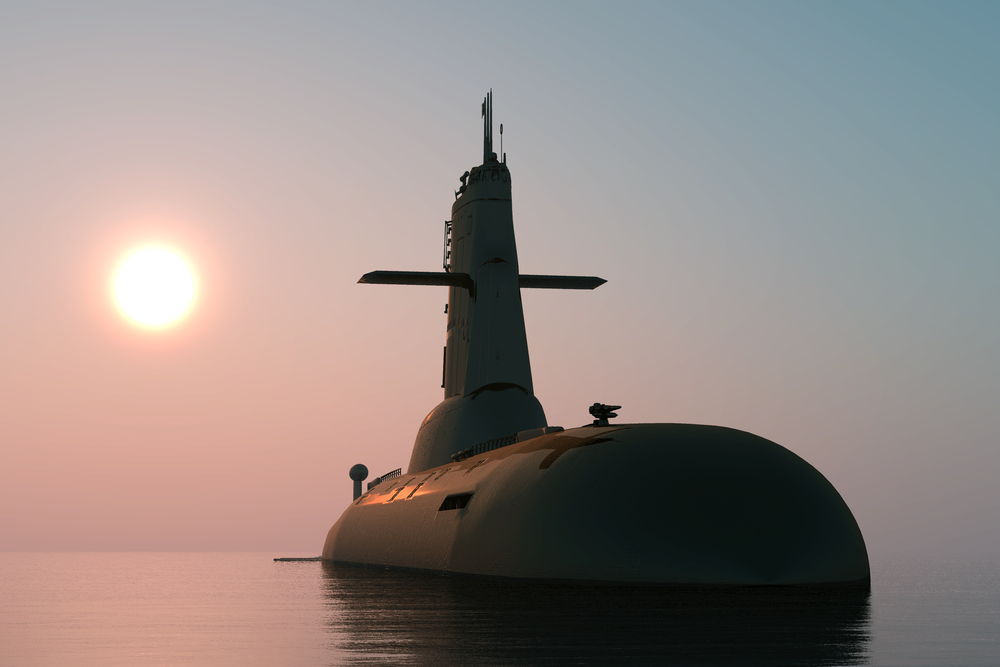Aussie Subs with a French Flair

Please note that we are not authorised to provide any investment advice. The content on this page is for information purposes only.
Australia’s decision to award the French firm DCNS the contract to design and build new submarines for its Navy was a controversial one. DCNS will build a scaled down conventional version of its Barracuda-class nuclear submarine with all, or most, of the submarine to be built in Adelaide, South Australia.
As well as the French option, there were two other contenders — ThyssenKrupp Marine Systems (TKMS) of Germany with a Type 216-class submarine, and the Japanese government with a proposal based on the existing Soryu-class submarine.
Australia’s decision to award the French firm DCNS the contract to design and build new submarines for its Navy was a controversial one. DCNS will build a scaled down conventional version of its Barracuda-class nuclear submarine with all, or most, of the submarine to be built in Adelaide, South Australia.
As well as the French option, there were two other contenders — ThyssenKrupp Marine Systems (TKMS) of Germany with a Type 216-class submarine, and the Japanese government with a proposal based on the existing Soryu-class submarine.
Japan’s contender had appeared the ‘captain’s pick’ of former Prime Minister Tony Abbott. However, this was overturned following domestic political outrage over the extent, or lack thereof, to which Australian industry and workers would be involved in building the Japanese option.
Looking back over the decision process, with perfect hindsight, the French option had advantages over the other two contenders. Technically, DCNS was offering what seems the ‘best’ submarine for Australia’s requirements, and politically, they appeared to be the contender most likely to provide extensive Australian industry involvement.
Strategically, the French option also offers a degree of certainty that the Japanese option lacked. While a choice in favour of Japan may have been a solid manifestation of the Australia–Japan security relationship, it would also have been locking Australia into long-term dependency on Japan for logistic and technical support for a major defence asset.
Given the uncertainty in the region, that may have been unacceptable. In comparison, Australia has a long-standing security relationship with France that will likely continue for the full lifetime of the new submarines.
While none of the three options was ideal for Australia’s unique requirement for a long-range conventional submarine, in the final analysis, the French contender was deemed the most suitable. DCNS claimed its design as the most advanced, as a pump jet-propulsion system is much quieter than a propeller, making the submarine harder to detect. It will also include the most powerful sonar system ever produced for a conventional submarine.
In addition, unlike the Japanese, DCNS has extensive experience with building submarines for the foreign market, having built more than 100 submarines for nine navies across the world.
Although rarely given much attention alongside Australia’s other bilateral security relationships, Australia has a strong security relationship with France that is both long-standing and functional. The two countries are close strategic partners both in the Indian and Pacific oceans.
They have bilateral agreements on cooperative maritime surveillance and enforcement in the waters around Kerguelen, Heard and MacDonald islands in the southern Indian Ocean. Australian fisheries officers regularly embark in French patrol vessels to participate in joint operations in this area.
France cooperates actively with Australia on defence, disaster relief and regional maritime surveillance in the Pacific Ocean. The French territory of New Caledonia is one of Australia’s closest neighbours. Australia and France also have a close working relationship in Antarctica where the French claim to part of Antarctica lies between Australia’s two claimed areas.
Coincidentally, the submarine decision was announced the day after Anzac Day 2016. Anzac Day is the national day of remembrance for those Australians who served and died in war or on operational service. The spirit of Anzac, with its qualities of courage, mateship, and sacrifice, is a key part of Australia’s national identity.
France played a central role in the development of the Anzac spirit. While Anzac Day itself is the anniversary of the tragic and ill-conceived landing of Australian and New Zealand troops on Gallipoli in 1915, the Anzac spirit matured on the battlefields of France between 1916 and 1918.
In what might be seen as fortuitous, French Defence Minister Jean-Yves Le Drian represented France at the 2016 Anzac ceremony at the Australian War Memorial in northern France and extolled the strong bilateral relationship between the two countries.
Despite reports to the contrary, the submarine decision is unlikely to damage Australia’s ‘special relationship’ with Japan. The simple reality is that Japan needs this relationship rather more than Australia does. When the dust settles, the Japanese government might even be relieved that it was not locked into a risky commercial venture with its fair share of critics on the domestic front.
The German shipbuilder TKMS said it respected the decision to award the nearly US$40 billion contract to rival DCNS. The company has a range of other defence interests in Australia and has expressed willingness to further contribute to Australia’s naval capabilities as needed.
The decision in favour of France is the first step is a long and tortuous process to build the new submarines. Major difficulties are likely to arise, but the long-standing relationship between Australia and France provides a solid basis on which to resolve any problems.
Australia–France security ties find new depth is republished with permission from East Asia Forum




